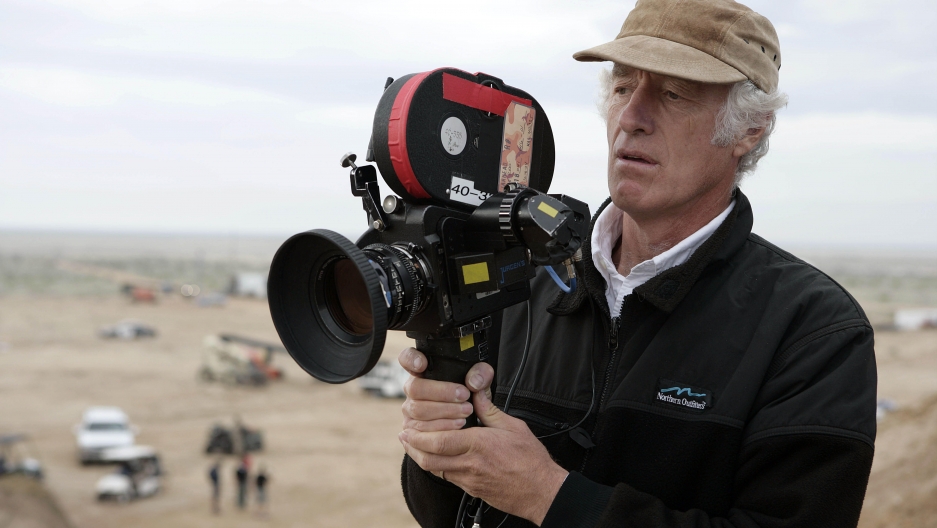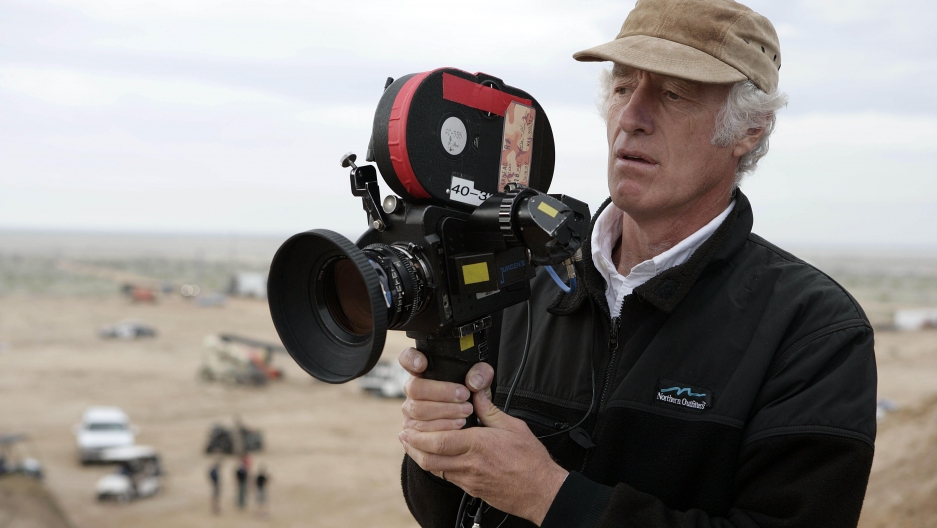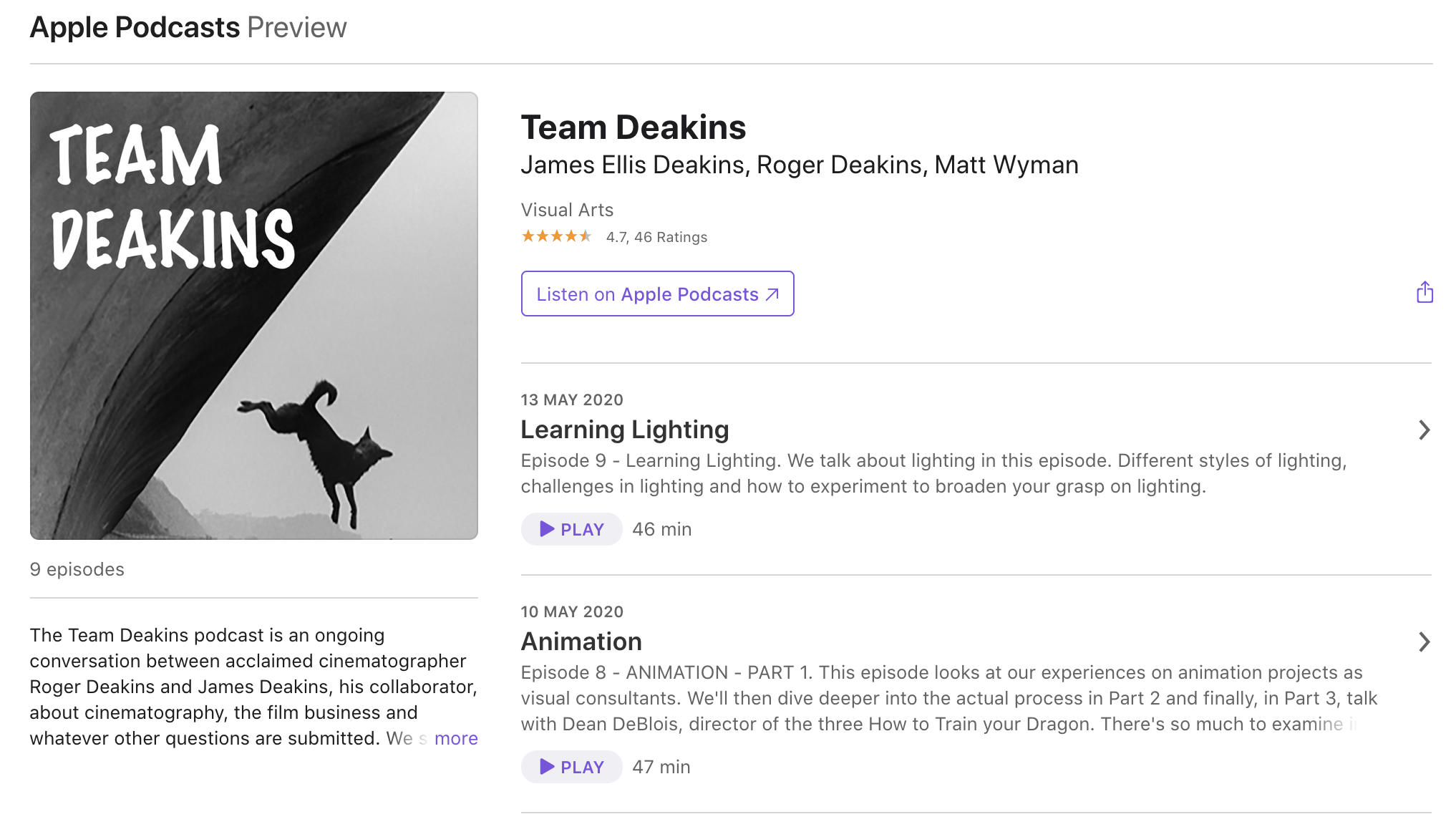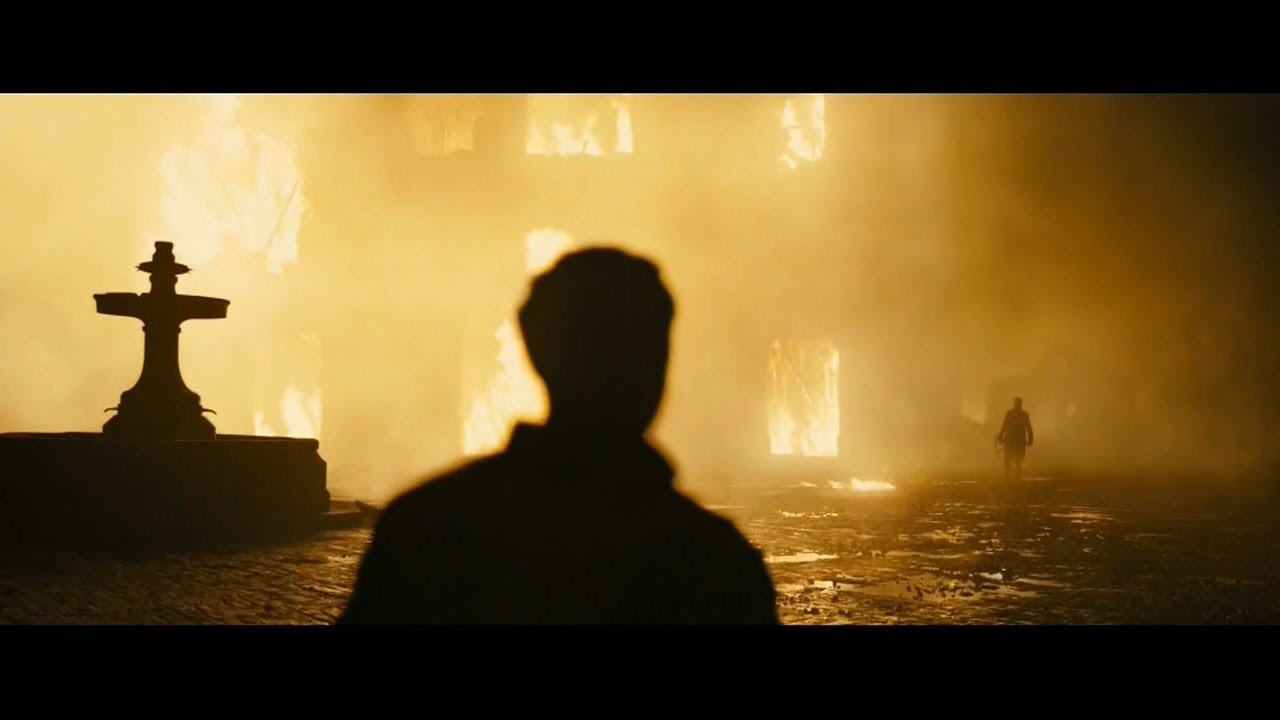

Given that several hundred hours of material are uploaded to YouTube every single minute, it’s probably no bad thing that the internet has almost simultaneously given us a way to attend lectures with the greats.
In the past we’ve been a little cautious about the value of a film education. It’s often difficult to figure out whether the expense of doing a degree is likely to be worthwhile but also in terms of career development, on the other hand there’s no way to attend a lecture from a high-end professional without paying for it. Is there?Actually, yes. Roger Deakins, ASC, BSC, CBE (and that’s enough letters after a name to impress anyone) has long been incredibly generous with his time, perhaps even anticipating the modern world of social media having launched his website in 2005 with the express intention of encouraging discussion and industry debate. Deakins most recent project involved a series of podcasts on what might reasonably be described as fundamentals – composition, lighting, choices of lens and his experiences in animation all of which are now available freely on Apple’s podcast site.
Team Deakins Podcasts:

Episodes from lighting, animation, lens choices and more available on (Apple's Podcasts)
Cinematography Breakdowns
Normally there has a need for some caution with this sort of thing, because Roger Deakins in common with several of the other big names who also post material online, is usually someone who works almost exclusively on very upscale productions. Most of us will go an entire career without approaching anything on a tenth of the scale Deakins is ever likely to do, and sometimes this can affect the usefulness of the advice given.
Very few cinematographers will ever find a need to build the giant wall of lights which simulated the burning church scene in 1917 for instance, or shoot anything with the sheer scope of Blade Runner 2049.
Light Rig Simulation:

1917 Burning Church - © 2019 Universal Pictures International
Deakins, received the Academy Award for cinematography for both, but the details of exactly how they were done might seem of little use to someone shooting a short film in the garage with some mates and a couple of desk lamps.
Happily, perhaps because of his choice of subject, Deakins avoids this trap. There’s inevitably a few impressive references which add a little colour to proceedings, but it’s overwhelmingly a resource that almost anyone could get something out of, and it’s very hard to argue with the price.
Also might be of some comfort to film school wannabes that the UK’s National Film School actually rejected Roger Deakins on his first application, though he was admitted in 1972. For people without the time or budget to take a similar route, there’s clearly never been a better time for a little independent study.
Tags: News


Comments